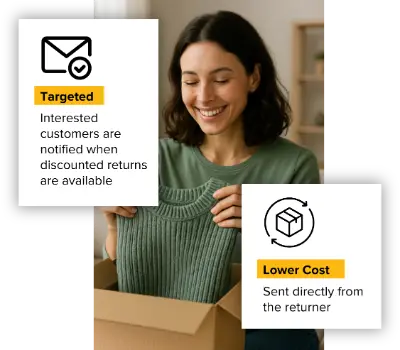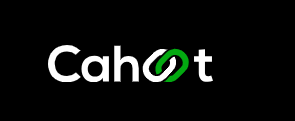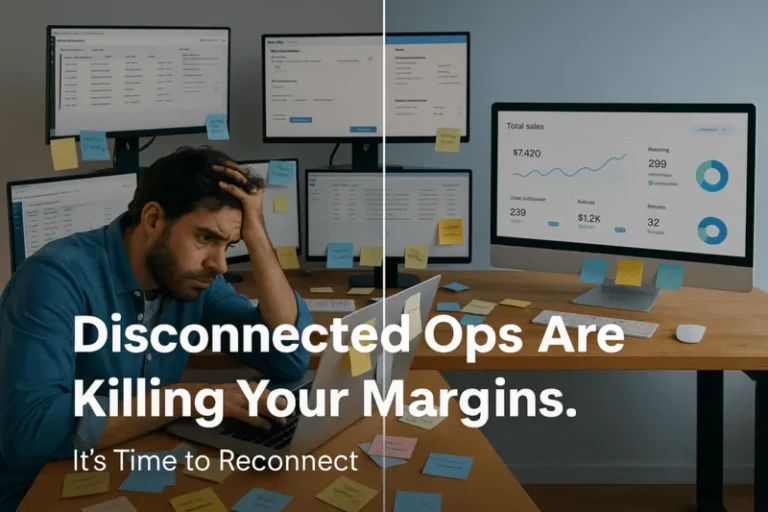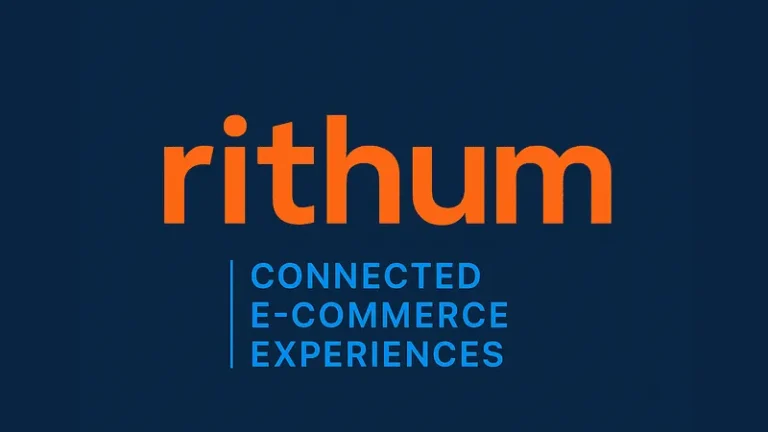Ecommerce Innovators: Exploring Cahoot, the World’s First Peer-to-Peer Order Fulfillment Network

Last updated on February 3, 2025

In this article
 32 minutes
32 minutes
Listen to podcast here.
Podcast: The Uber of the Shipping and Delivery Industry, Manish Chowdhary, Founder and CEO at Cahoot
Ecommerce Innovators is a podcast hosted by John LeBaron, Chief Revenue Officer at Pattern, that explores innovative strategies and trends in global ecommerce by bringing together experts in the industry. The podcast features a special guest, Manish Chowdhary, Founder and CEO of Cahoot, the world’s first peer-to-peer order fulfillment services network. In the podcast, Chowdhary explains that Cahoot is an ecommerce network where ecommerce brands and retailers can join as order fulfillment partners and monetize their spare warehouse capacity, similar to Airbnb. Brands and retailers that are looking for order fulfillment services can benefit from a lower cost structure and a large scale warehouse network. Cahoot provides a fully managed order fulfillment service, much like Uber, and ensures all stakeholders are participating and being successful. Chowdhary got into this space in 2002 when he discovered a significant number of identical products crisscrossing coast-to-coast, causing shipping inefficiencies in delivery and costs. He then applied for his first patent and started Cahoot.
Speaker 1:
Welcome to Ecommerce Innovators, a podcast that brings together the brightest minds in the industry to explore innovative strategies and trends in global ecommerce. Our host is John LeBaron, chief Revenue Officer at Pattern, the premier partner for global ecommerce Acceleration.
John LeBaron:
Thank you so much for joining the show today. This is Ecommerce Innovators. I’m your host, John LeBaron, and I’m the Chief Revenue Officer at Pattern. And we have a special guest today that I’m very excited to introduce to you. Manish Chowdhary is the founder and CEO of Cahoot. And it says this is the world’s first peer-to-peer order fulfillment services network. So welcome to the show today, Manish.
Manish Chowdhary:
Thank you, John. Thanks for having me.
John LeBaron:
Yeah, you bet. So Manish, I got to meet you in person a few weeks ago at our Accelerate Summit. I don’t know when this will air, but it was really fascinating. You’re clearly very bright and you know a lot about this industry, I think you spend a lot of time studying it. And so I’m excited to introduce you to the listeners of this show and have them learn a little bit more and share some of the goodness that you have spent your whole life kind of dedicated to. So you’re a crazy serial entrepreneur and a little bit of a mad scientist. Tell us a little bit about what a peer-to-peer order fulfillment services network is.
Manish Chowdhary:
Thank you for your kind words, John. You’re giving me more credit than I deserve, but I’ll take it for now. peer-to-peer order fulfillment or peer-to-peer network is essentially brands and retailers helping other brands and other retailers. And in context of fulfillment, what Cahoot has done is created a large scale network where a brand can join Cahoot as a fulfillment partner, so if a brand or a retailer has a warehouse or multiple warehouse, and they have spare capacity, they can actually monetize their spare capacity for the very first time. Similar to if you were to put up your spare bedroom and your house on Airbnb.
And on the other side, we’ve got brands of retailers that are looking for order fulfillment services. They get to benefit from a lower cost structure and a very large scale network. That is essentially what a peer-to-peer network is, and Cahoot is the governing body so that it provides a fully managed service, and I’ll use the Uber example. So the seller or the brand that’s looking for fulfillment services doesn’t have to negotiate directly with the driver. If you are an Uber driver, Cahoot provides the entire service in a box and ensure that all the stakeholders are participating and being successful.
John LeBaron:
Yeah, that’s amazing and I think it’s so innovative. And we look at order fulfillment and logistics, crazy amounts of innovation. Every time I look at the fastest growing inc., 5,000 type companies, it feels like 50% or more of them have something to do with last mile delivery, or freight forwarding, or anything, direct import, all that sort of stuff. So I think the reason why it’s so expensive and it’s only getting more complex and more expensive, and that capacity just really comes back to bite you if you have too much because there’s so many fixed costs.
So how did you get into this space? And obviously you have to be very, very smart to figure out the world’s toughest problems, at least ecommerce’s toughest problems. How did you get into this? And tell us a little bit about your career trajectory.
Slash Your Fulfillment Costs by Up to 30%
Cut shipping expenses by 30% and boost profit with Cahoot's AI-optimized fulfillment services and modern tech —no overheads and no humans required!
I'm Interested in Saving Time and MoneyManish Chowdhary:
Thank you, John. The way this journey started, believe it or not, this was long before Amazon Prime existed, long before the consumers were ever demanding two-day or one-day free delivery. This is back in, I take you back to 2002, and I’ve been involved in ecommerce since 2000. So my other company is an ecommerce platform and we were studying consumer order fulfillment data. So if you may recall in early 2000 the transition, the industry was making transition from film cameras to digital cameras and digital cameras was the hottest thing, if you recall. So essentially what we did was we took sales data or order data from about 70 or so top ecommerce vendors, and this is back at a time when there was an incentive for people to buy out of state because you don’t have to pay sales tax.
John LeBaron:
Absolutely, yeah.
Manish Chowdhary:
So when we plotted that data off these digital cameras, I remember Canon L or one of those Nikon COOLPIX cameras, those were two popular products.
John LeBaron:
Yeah. Of course, yeah.
Manish Chowdhary:
And when we plotted that, what we saw, it was fascinating. What I saw was a 30% of the time a consumer in California was ordering that Nikon COOLPIX from a vendor in New York. And at the same day, a customer in New York or New Jersey, was ordering the same identical product from a vendor on the West Coast. And just a light bulb went off in my head is like 30% of the time, these two shipments are crisscrossing coast to coast, that makes no sense. At the time, it was taking eight days to deliver the item using UPS Ground, it was costing a lot of money, and consumers were waiting 16 extra days. And everybody, it just did not feel to me, I went back to first principles and say, “This should not happen. This is just not natural.”
And that’s where I applied for my first patent at that time, that what if I were to create an exchange where all these vendors could pull their orders and Cahoot would, at the time the word Cahoot didn’t exist, the company didn’t exist, and we would act as a clearinghouse for the orders and facilitate most optimum delivery keeping competitors and allowing competitors to collaborate in an anonymous manner. That is the origin of where the idea came from.
John LeBaron:
Oh, that’s fascinating. So really getting Cahoots with one another and try to co-mingle the inventory that they… Almost, from a blind standpoint, right?
Manish Chowdhary:
That is exactly right, because if you take an example from a parallel industry, like a stock market, you have clearing houses and stock exchanges which do settlements of trade at the end of the day or whatever the closing period is, why could we not apply the same principle to ecommerce? And fast-forward 10, 15 years, this has become a necessity now because when you think about the macro problem that how do you speed up delivery? You need to think from first principles, rather than thinking how something has been so far along and this is how we’ve done things, but true innovation is really thinking outside the box as you refer to.
John LeBaron:
Yeah. Well, and again, a parallel from a different industry, super nerdy too. But again, I spent a fair amount of my career in telecom and yeah, there was always this real big challenge of, I think about Netflix, every user trying to stream and the loading times of how long it takes. At the end of the day, it’s all zeros and ones anyway, but it’s got to get across all the way across that network. And how do you get people from Phoenix and Philadelphia and Seattle all trying to binge-watch their favorite shows and reduce the buffering? And the solution truly was push it closer to the metropolitan areas, push it what we call the edge of the network and allow that transit time to be more instantaneous and almost just again, reduce that buffering.
And technology has eased some of that just in terms of capacity in the network, but I’m with you. And it’s like, it’s so obvious, it stares you right in the face. But that’s kind of why Amazon I guess is one in a way, is because they become that centralized clearing house as a whatever, aggregate platform, but it doesn’t really work in a fragmented world of all of the different retailers trying to ship, the e-tailers trying to ship, and the brands themselves, all the D2C brands. And I think that’s, yeah, ultimately that’s probably where I would love to steer the conversation. We’ll get to some of the quote, unquote, “Canned” innovation type questions that we always kind of cover because you get a different flavor no matter what.
But going down this path, I guess, how do you as a brand or what are some of the big challenges, all these peripheral players outside of Amazon face in trying to get goods to the customer? I’ve got to think Amazon has set this standard that you talked about of same day, overnight, next day, whatever you want to call it, delivery. How can other folks, besides obviously using your service, I’m trying not to be too objective here or subjective.
Manish Chowdhary:
Yeah, of course.
John LeBaron:
Yeah. What are the biggest challenges they face in trying to keep up or compete with a behemoth like an Amazon?
Manish Chowdhary:
Frankly, John, I think a lot of ecommerce brands and retailers really are not up to speed perhaps on the solutions that already exist. If you break down the last mile fulfillment or trying to achieve Amazon-esque, Amazon-like fulfillment experience or consumer experience from the checkout all the way to getting the product in the hands of the consumer, at a high level, first and foremost, you need to… Let’s compare a DTC site, if you’re on a DTC site and in your shopping cart, you need to display when will the product arrive, what I call date-certain shipping, and technologies exist even now. Yes, it may not come all from one single player like Amazon, but I know that some of the bigger ones like Target and Best Buy have done a fabulous job.
And frankly, for a couple hundred bucks a month, you can implement this date-certain shipping. So that’s number one, because consumers do not convert when there’s uncertainty. It’s just like you can see what’s happening in the stock market. The world is not going to come to an end, but because we don’t know when the war is going to end and so on, and therefore there’s a lot of uncertainty. So the solutions exist. Step one, add date-certain shipping to your shopping cart. Number two, bring the shipping on parity with Amazon. It is easier than they think. If you’re spending 15% commission on Amazon, that’s 15% for you to play with and apply that to the shipping subsidy or whatever you want. If you want to think of that as a subsidy, I mean FBA is not free. The consumers are paying a membership fee and all of that, so that’s step one.
And then distribute order fulfillment if you break it down, you got to get your inventory closer to the consumers. So if you want to target a two-day guarantee delivery, if you place your inventory strategically in five warehouses, you can achieve that and you can provide the guarantee. Don’t worry about that one order that you need to overnight are 2% of the orders, it’s retailers and ecommerce brands get too caught up into the exceptions and the 1% to 2% problem, and they throw the baby out with the bathwater and say, “Oh, it’s not possible.”
That is the reason, if you go back to FedEx, the original of FedEx guaranteed delivery at 10:30 AM or your money back. And I can assure you that FedEx did not give a lot of money back and the day they put that guarantee, that’s when the sale just took off. And same thing with Domino’s, pizza delivery within 30 minutes or your money back. I guarantee you Domino’s is still existing, they didn’t go out of business because of the guarantee. So that guarantee is crucial, and then having the technology to ensure and execute against the lost mile delivery.
And then customer communication, that’s another place where we find brands and retailers are not totally up to par. Okay, you’re doing a great job, you’ve distributed your inventory and the order goes out. If you don’t communicate as frequently about the progress of that order fulfillment and delivery along the way, it’s like free-falling in the forest. In fact, we know from data and from anecdotal evidence, Prime does not live up to its promise. I don’t know how many orders you’ve ordered, John, that by Prime it says it’s going to arrive tomorrow, it doesn’t arrive. I would argue that at least double-digits failure in that promise exists, but they communicate with the customer through the text messaging, through the email, and they communicate frequently.
And then finally, the icing on the cake is when you get a picture of the item outside your front door and people think, “Wow, only Amazon can do it.” If you piecemeal all of these solutions together or go to a provider that can offer, I can assure you that you can offer a Prime-like experience.
Looking for a New 3PL? Start with this Free RFP Template
Cut weeks off your selection process. Avoid pitfalls. Get the only 3PL RFP checklist built for ecommerce brands, absolutely free.
Get My Free 3PL RFPJohn LeBaron:
Yeah, I think that’s amazing. So let’s keep going down this path because I think it’s, to your point, a lot of ecommerce brands and a lot of listeners by extension on the show may not truly understand what’s available. And if you’re the world’s first, that is kind of tricky. So I don’t know if you have a public customer you can talk about, or we can just use the example of a drone or a digital camera or whatever, but how does it work? If you are a brand… Well, we could go through both examples, the person with extra capacity or the person on the demand side of the network or the fly side of the network with a brand. Give us an example of how this works, how they use the software, what it looks like, how much of the inventory are they pushing into the quote, unquote, “Edge” versus kind of keeping consolidated? How does it work?
Manish Chowdhary:
Right, great question. So let’s talk about a real example. I’ll use one of our clients, Cali’s Books is one of our client. They’re a brand, they’ve created innovative children’s books that are audiobooks. Think about Cinderella, and you can actually play that book in different languages. So if you want to learn Spanish, your kids want to learn Spanish, it’s Cinderella in Spanish. And also, people can record. So if you were away from home, John, you could record it and you can send that as a gift to your kids or your loved ones. So it’s a very brilliant concept that they have created. So great demand, they have their manufacturing overseas, and they bring in container loads and they would, first step is to bring it into West Coast because the product comes from China and other places.
So we would first house it just like Amazon into a centralized warehouse, and then we would distribute that inventory across the, in this particular case, Cali’s Books inventory is sitting in six to seven different Cahoot warehouses, strategically located greater New York area, Southern California, Midwest, upper Midwest, the Chicago area, the Dallas region, and somewhere in the Middle North Carolina, and one more. So now you’ve strategically moved that inventory based on demand planning. What is the movement of inventory? You don’t want to send same 10 units to all locations equally because the population and demand is not equal. So that is crucial.
And then in their case, we connect directly to the sales channel, whether the order is coming from Shopify, Amazon, or Nordstrom. So they sell B2B and B2C, so they need the ability to ship both wholesale and retail. And right now with the inventory fully distributed, we are doing Seller Fulfilled Prime (SFP) for this customer so that they’re achieving the Prime target. And in fact, as you know, Amazon holds Seller Fulfilled Prime (SFP) merchants even more accountable than themselves and FBA, and they have had no issues whatsoever, they have been operating flawlessly.
And then, because that Seller Fulfilled Prime (SFP) is being offered on Amazon, they are now in the process of implementing that same guaranteed two-day, one-day delivery on Shopify, on other marketplaces like Target, Walmart, and all the others. So you can see that delivery once you’ve got the infrastructure in place, you can tackle all the sales channel very easily.
John LeBaron:
Yeah. No, I mean it’s really innovative and super fascinating. I guess going back to your comment and the way the business model works, are those actually your warehouses? Or to the other side of it they’re… When you say a Cahoot warehouse, it’s basically someone who’s partnered with you that has spare capacity and they’re doing both the fulfillment and the inbound receipt and all that other stuff, right?
Manish Chowdhary:
That’s right. The reason why we call them a Cahoot warehouse is because Cahoot takes accountability on behalf of the seller because the seller, it’s akin to Uber driver, that driver is driving for Uber. It’s very similar to these are independent warehouses that belong to other merchants that are super successful. The average tenure of these merchants is over 10 years selling online themselves, so they know what it takes to manage and maintain good standards in Amazon because many of them are doing it themselves. And in many cases, Cahoot warehouses are both an order fulfillment provider and also a client. So they have a warehouse in California that is providing fulfillment services. They also need order fulfillment services in New York, so it’s such a symbiotic relationship that they understand that they cannot let Cahoot down, they cannot let our clients down because if that happens, somebody could let them down and Cahoot acts as the governing body ensuring that that doesn’t happen.
John LeBaron:
Yeah, I love that. Well, again, this is just so great. I love your expertise, I love your passion, enthusiasm, it’s definitely coming through here. If you think about on the flip side, there is Amazon, Amazon’s been building like crazy, they definitely had their work cut out for them once COVID hit and trying to scramble and build capacity into the network as quickly as possible. And I’m sure they did not have Cahoot, they should have leaned on you guys. You guys could have given them instant capacity, but they built it out themselves, we’ve now heard in Q1 that they overbuilt capacity. What does that mean for Amazon sellers? What does it mean for other channels?
Manish Chowdhary:
So it means two things. One, the good news is Amazon is unlikely to provide to apply capacity constraints on inbound inventory as they did last year because they were struggling last year, this capacity really just opened up a lot this year. So a lot of the sellers are very concerned about not being able to send enough inventory for the holiday season, the Q4 and so on. So I don’t expect any such bottlenecks this year, so that’s the good news. The not so good news is they have very publicly stated that this over-building is what resulted or partially resulted in them making a loss the first quarter of this year. And Amazon hasn’t had that big of a loss in many, many quarters. So they attributed that to that loss.
And of course, it is safe to say that FBA is somewhat subsidized people, their shipping is very affordable, but I expect because of Amazon’s focus on profitability, sellers should brace for price increases in FBA at least once or two times between now and end of the year. So the good news is you will not have capacity constraints. The not so good news is prepare to pay more for FBA services.
John LeBaron:
Yeah, absolutely. Not only shipping fulfillment, I would say storage as well. Someone’s got to pay the piper if you’ve got too much warehouse capacity, storage fees will likely go up as well, so I think that’s a great observation. And as you look forward to, I often look toward Asia as this harbinger of things to come. I look at JD.com, they’ve got six-hour delivery across like 90% of China. So it’s I think the notion of two days now, one day to same day, to in fact we have an order fulfillment center in Salt Lake City now for Amazon. And back to your point, it’s kind of interesting to watch what Amazon is doing. I’ve lately seen, especially near the weekend, that Amazon will push Prime deliveries out to, if you order even late on a Thursday night, you may not get it until Monday, but there’s this new option that says you can pay $2.99 more and get it in four hours, or you’ll get it overnight, it’ll be on your doorstep.
So it’s kind of fascinating to look at how different things are getting subsidized, but a big piece of what Amazon is doing in many markets is they’re kind of creating their own delivery network as well, all hours of the day and night. And back to your Uber analogy, is that something your company is doing today or do you anticipate it will soon is kind of extend the order fulfillment services network or the notion of the ride-sharing or the Airbnb of storage into the delivery network itself and last mile delivery, is that on the roadmap or is that already happening today?
Scaling Made Easy: Calis Books’ Fulfillment Journey
Learn how Calis Books expanded nationwide, reduced errors, grew sales while cutting headcount, and saved BIG with Cahoot
See Scale JourneyManish Chowdhary:
Oh, we are certainly doing a lot more than a traditional third party logistics (3PL) company. So for example, in order to meet SFP, Seller Fulfilled Prime, or let’s just call Prime delivery expectations from Amazon, we need to be fulfilling orders six days a week at least. You need to meet at least 30% one-day delivery targets. And Cahoot is still, Amazon has two decades of lead time over Cahoot, but Cahoot is cashing up fast. So the objective with our peer-to-peer network is this network grows very rapidly and in highly densely populated urban areas, we can achieve same-day delivery using couriers. It’s just a decentralized model versus Amazon’s model is largely vertical integration, which I believe that they’re both, there’s the Apple model and there’s the Microsoft Windows model.
And we believe that we will create more opportunities for partners collectively as part of our network that there will be a large incentive for a lot of folks to participate and also gain from that experience. So when an order fulfillment partner joins Cahoot network, they’re getting a line share of the revenue that we collect, and so there’s an incentive for them to promote that. And also, it’s sort of like if you’re an Uber driver, you want to do a great job so you get a high rating because if you don’t get high rating, then Uber will not select you for the next ride. So Cahoot implements a very similar principle and model.
So I believe that both can coexist, there is room for both of them. And from our perspective, Cahoot is a more capital efficient and it’s a more cost-effective model because you can achieve any target you want, John, you can achieve 30-minute delivery if you want to send a charter plane from Salt Lake City to somewhere.
John LeBaron:
Right, absolutely. Well, that begs the question then Amazon with excess capacities is still trying to figure out how do I use this? How do I increase my strangle hold? Prime penetration is massive in the US. You just saw this announcement with Grubhub yesterday of like, how do I get either more loyalty because they’re raising Prime prices? How do you get more stickiness? How do you bring new people onto the platform? It does feel like D2C or other non-marketplace customers are one of the last few frontiers that they haven’t completely dominated. And so you see strategic initiatives starting to emerge, like buy with Prime. So now D2C brands can opt into this buy or e-tailers can opt into this thing. Is that a good idea? What’s your opinion on that?
Manish Chowdhary:
It’s a horrible idea, it is absolutely a DTC killer in my opinion. And that was the topic of my speech at the Accelerate Conference, and it’s not meant to be self-serving, because essentially this is an attempt by Amazon to infiltrate the entire consumer journey. And I know that the talk is going to be published on your website shortly for those folks that are interested in learning more, essentially the way I see this is if you allow Amazon into your DTC site, what’s the difference between selling on Amazon and selling on your DTC site? Who owns the customer? Who controls that customer journey?
And it’s actually, I’ve called it the Trojan Horse. It’s essentially a Trojan Horse that, let’s take a very simple example. If the shopping cart belongs to Amazon and Prime, for long, DTC brands have always encouraged consumers to increase their average order value, the higher cart size by putting free shipping on orders over $49, over $99, but move over to Prime, there is no minimum. So now all of a sudden, if you were Lucky Heart, the popular cosmetics company, if you have a minimum of $49 and you introduced Buy with Prime, your cart size is going to go down dramatically. Now, if people abandon the cart, that ad is going to show up on Amazon. And if you are not on Amazon, your competitor ad is going to show up.
And we know that every Prime shopper, there are about 200 million Prime shoppers in the US, they visit amazon.com once a week. 85% of them visit once a week and $45, over half of them make a purchase once a week. So the likelihood of your competitor product being targeted on amazon.com to that shopper that actually originated the journey on your site is a lot higher. So jury is still out, the program is still in its infancy, it is by invitation only, but it does not appear to be a good idea for DTC brands to take those leap right now.
John LeBaron:
Yeah, it’s definitely deal with the devil or letting the enemy come sleep in your bed or whatever crazy metaphor you want to make. I think it is eyes wide open for sure, you got to figure out how close you want to get to the potential enemy. And not really enemy, right? But it’s like your dependence, the more Amazon has dependence on you as a consumer and certainly as a brand, the less wiggling room you have to be able to chart your own destiny. And I’m with you, the true kind of gold standard of a D2C brand is owning that relationship, owning the experience, owning everything in that customer journey. And the more you kind of outsource that, the harder it is to truly maintain differentiation in the eyes of the customer and a strong brand.
So while this has been so great, I know we don’t have a ton of time left, maybe a handful of other questions just around the topic of innovation. I know we’ve been speaking about it in the periphery here and so many innovative approaches and thoughts here. What advice do you have for brands that are looking to either reduce their dependency or relationship with Amazon or really just trying to build their brand and double down on the D2C front? What advice do you have for brands that are looking to try to grow their brand via ecommerce?
Manish Chowdhary:
That’s a great question, John. I mean, the way I see it’s not so much about dependency, reduction of dependency on any one party. It’s about chartering your own path, it’s about having more independence. I know we talk about in this new world, employees want more flexibility at work and how they work and so on. So ecommerce brands should hold the keys and they should be the one that should own the customer and own the relationship because that’s the definition of a brand. Because if a middleman controls all the customer data, all the relationships, you can’t market to that customer when you want, you can’t have a direct engagement with that customer. It’s hard to say who is the brand.
And when you look at it, when people buy on Amazon, I’m sure there’s data and stats out there, nine out of 10 times the consumer does not remember or know what product they bought and which seller they bought it from. They just say, “I bought it on Amazon.” I have yet to hear, “I bought it from Acme, Inc. on Amazon.” They say, “I bought it from Amazon.” So my advice is really, if you want to succeed in DTC, DTC is a fascinating world, but it’s also full of graveyards. We know that even the likes of the darlings, like Allbirds, are struggling from a profitability standpoint, but focusing on lifetime value is so important.
Basics, going back to basics, that it’s not just about customer acquisition, it’s about customer retention and lifetime value. And that’s why you should be present wherever the customer is, including your website. You cannot have your website not be on parity with marketplaces because marketplaces are a competitive environment. It’s sort of like if you’re competing against others, against other brands, you need to achieve parity. So from an order fulfillment and logistics standpoint, it’s a mandate for brands to take their website with the same level of seriousness and from a fulfillment and logistics, they cannot throw in the towel and say, “Oh, we can’t do it.”
The reality is solutions exist. And believe it or not, in many cases they’re cheaper than FBA and can help you achieve the same outcomes. And I would say that take that really seriously, apply that date-certain shipping, live up to that promise. When you say guaranteed delivery, don’t exclude the few items because again, think about the 2% rule, think about 98% of your outcomes and not worry about the 2%, and I think that will start turning the tide. And then consortium of stores, there will be, I expect innovation where there will be new networks that will be formed. So for example, I know Shopify has been experimenting with Shopify Audiences, and Shopify Promise pay, and so on. So there will be other avenues to tap into, not only on marketplaces.
John LeBaron:
Yeah. Well, it’s so great. So I would just say maybe to close this out, you have been an entrepreneur, again, for a long time. You’ve hired a lot of people, you’ve fired a lot of people, you’ve seen probably a lot of highs and a lot of lows. I always like to ask this question, what is one leadership principle that you particularly love, do you feel like’s been a real big part of your success?
Manish Chowdhary:
I think for me personally, think big and really think and be contrarian. When I started Cahoot with the original idea that I shared competitor collaboration, that really is a highly contrarian. We are taught to compete with each other. Brands or retailers are competing, how do you collaborate? There are ways when collaboration makes sense and there are times when that doesn’t make sense and it actually leads to a greater good and also a win-win relationship. I’ll give you an example. Airlines, we have codeshare. When you want to go from here to Bali, Indonesia, you’re going to probably have to take a flight from Salt Lake City to Los Angeles, and then you’re going to take a flight from there to somewhere else. I know you’re nodding your head.
So if you just take out those constraints that why it cannot be done, and start thinking from first principles and be bold, and if you believe in it and you can prove that it can actually work, then it’s a matter of figuring out how to make it work. And most of us, or most people, and my leadership principle has been challenge your team to think big, think bold, and be contrarian and believe in that self. It’s better to be a monopoly than to be competing in a highly crowded red ocean.
John LeBaron:
Yeah, absolutely. Well, I think you’ve definitely thought big, taking on the world’s biggest logistics company, so to speak, and certainly one of the wealthiest individuals in the world is no small task, and so you’ve definitely thought big. And the good news is it sounds from everything I can see, you’re delivering on it. So where can people find you? Where can they learn more about, help our listeners understand if they want to investigate where should be their next turn?
Manish Chowdhary:
Well, check us out on our website. That’s www.cahoot.ai, that’s Cahoot with no S, C-A-H-O-O-T.ai. And I invite people to come find me on LinkedIn, follow me. I write frequently, I speak quite frequently. And John, thank you so much for having me on this show, it’s such an honor to be here.
John LeBaron:
No, thank you so much. And I’ve learned a lot personally, and that’s what I usually like to do as well. Part of the reason for doing this podcast is just to learn more and get exposure to super smart people that are innovating in this industry. And I think we can all learn a lot from what you shared with us today, so thank you so much for joining. Again, this is Ecommerce Innovators and if you’ve liked what you’ve heard today, go ahead and subscribe on your favorite podcast player and feel free to send feedback as well. Send some comments or shoot me a line at john@pattern.com and we will look forward to hearing you on the next one. Thank you so much, everyone.
Turn Returns Into New Revenue
